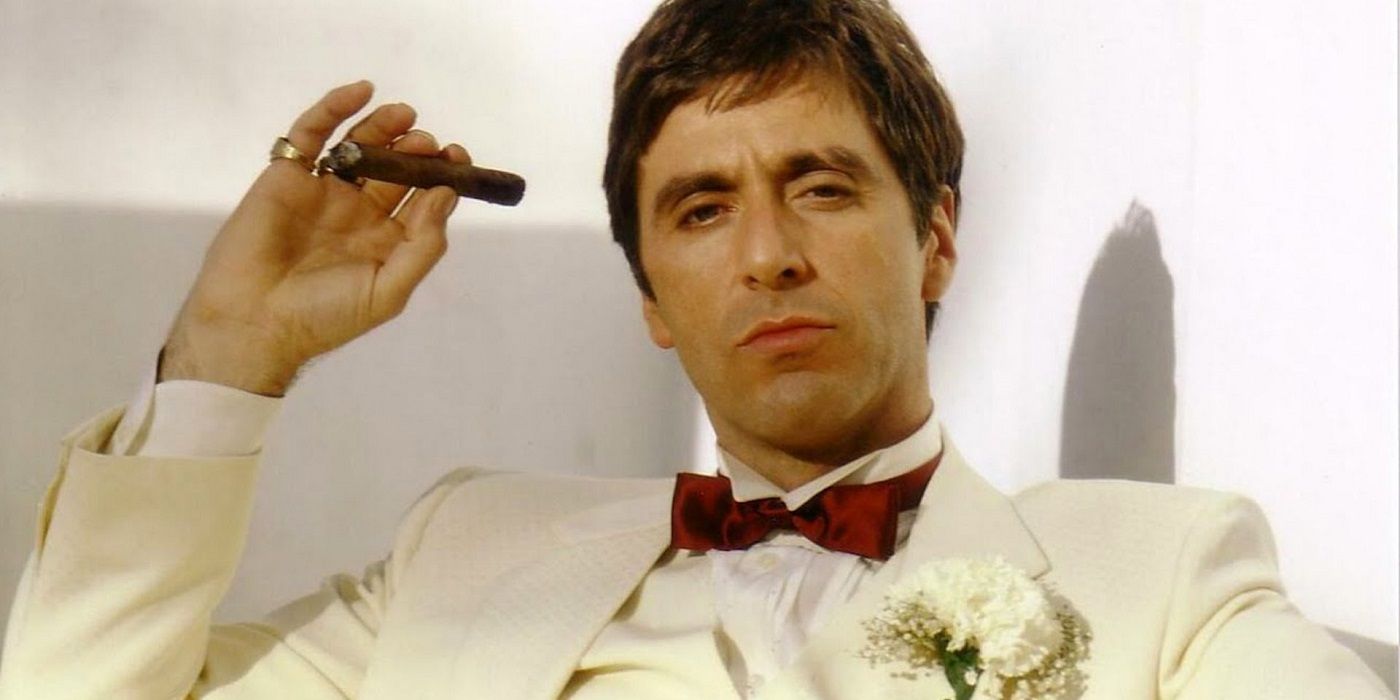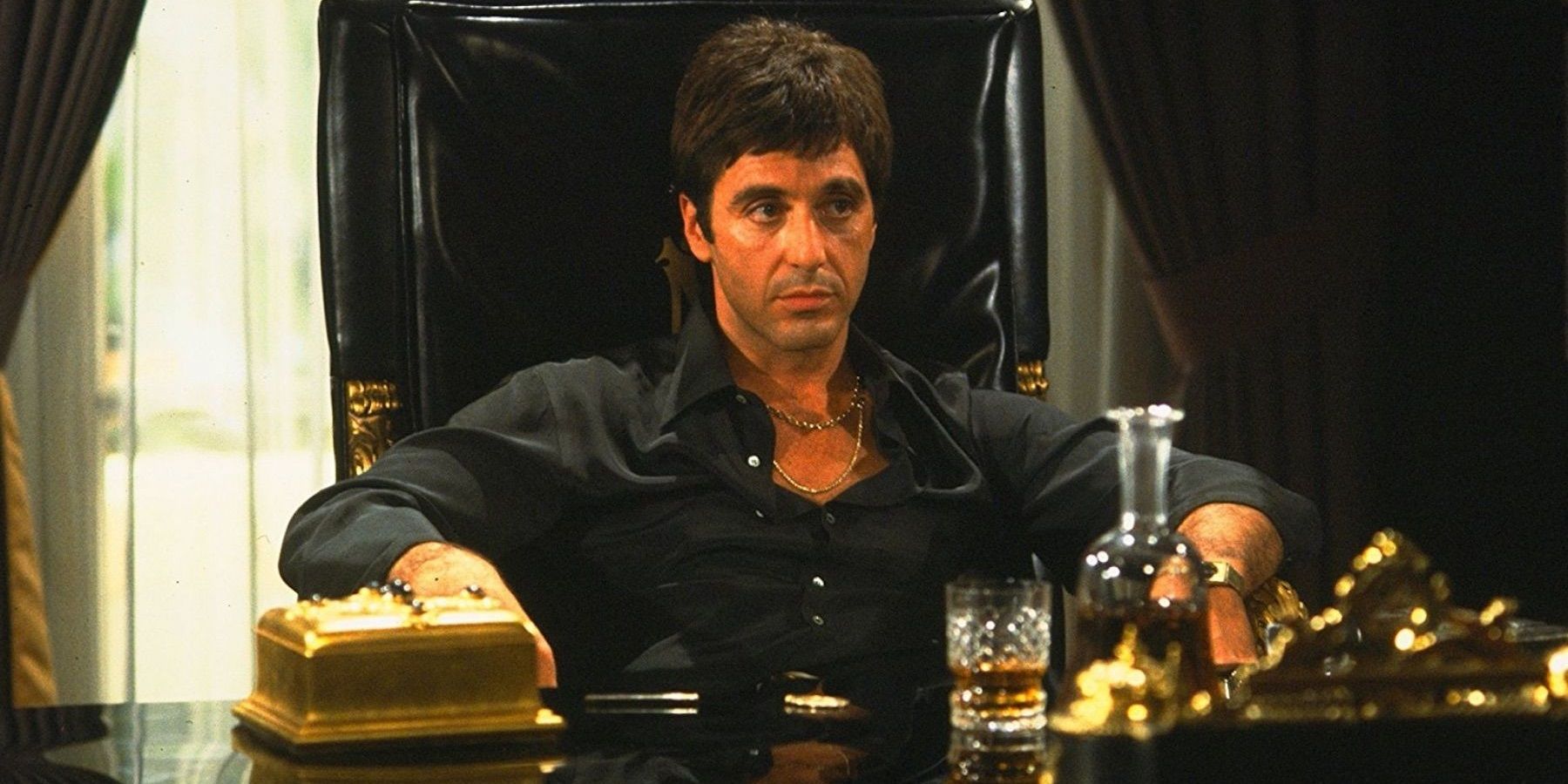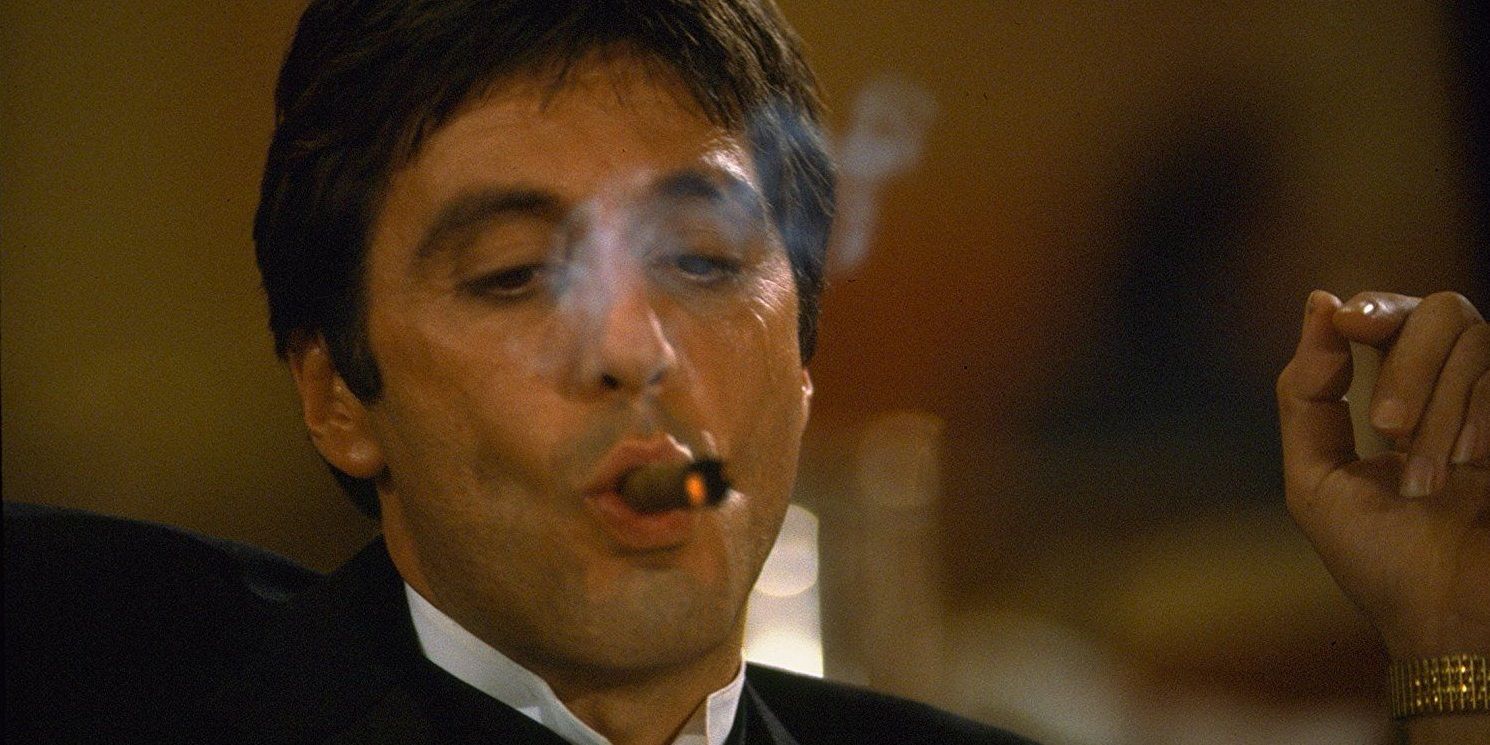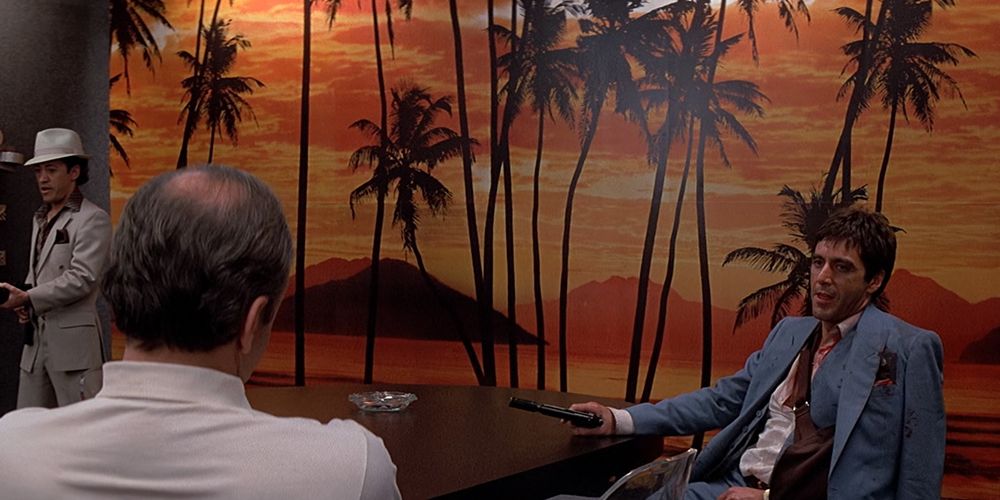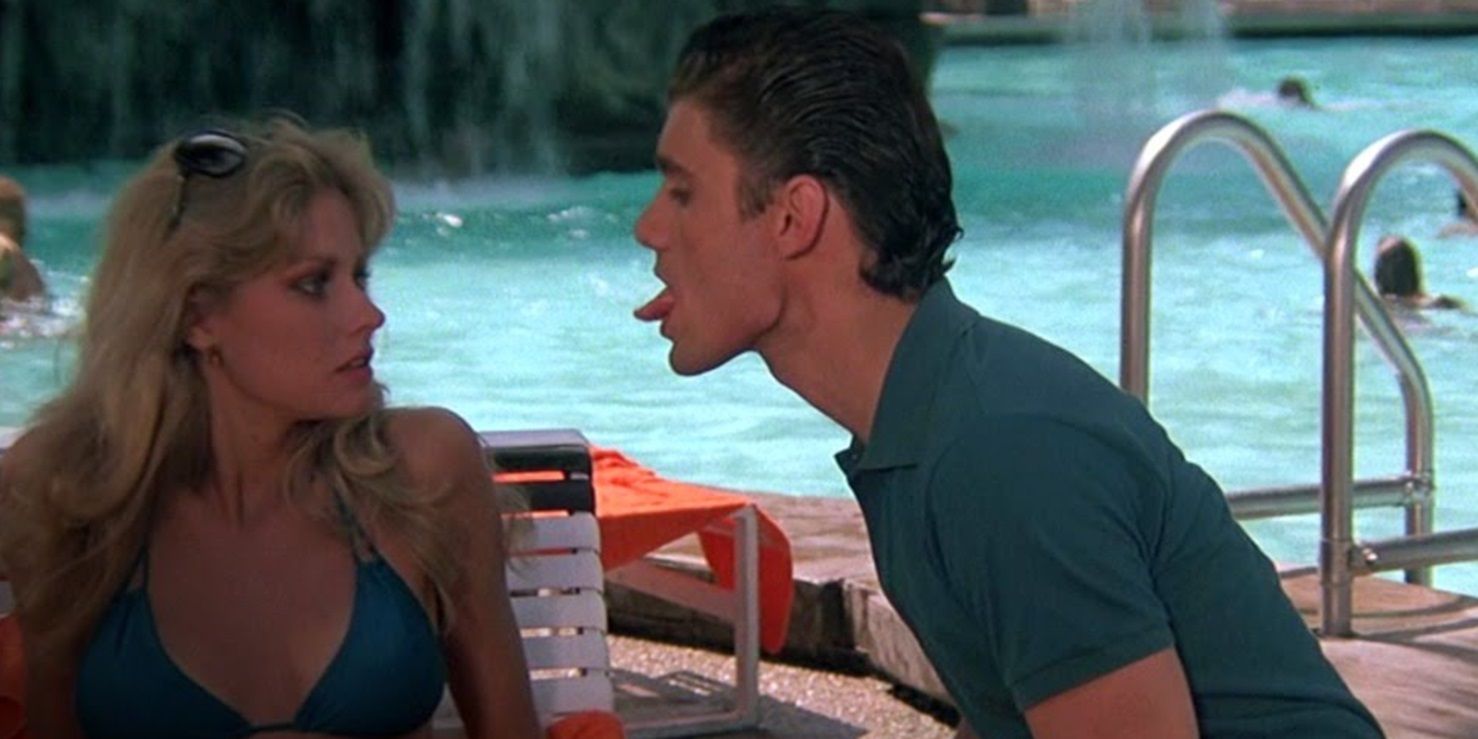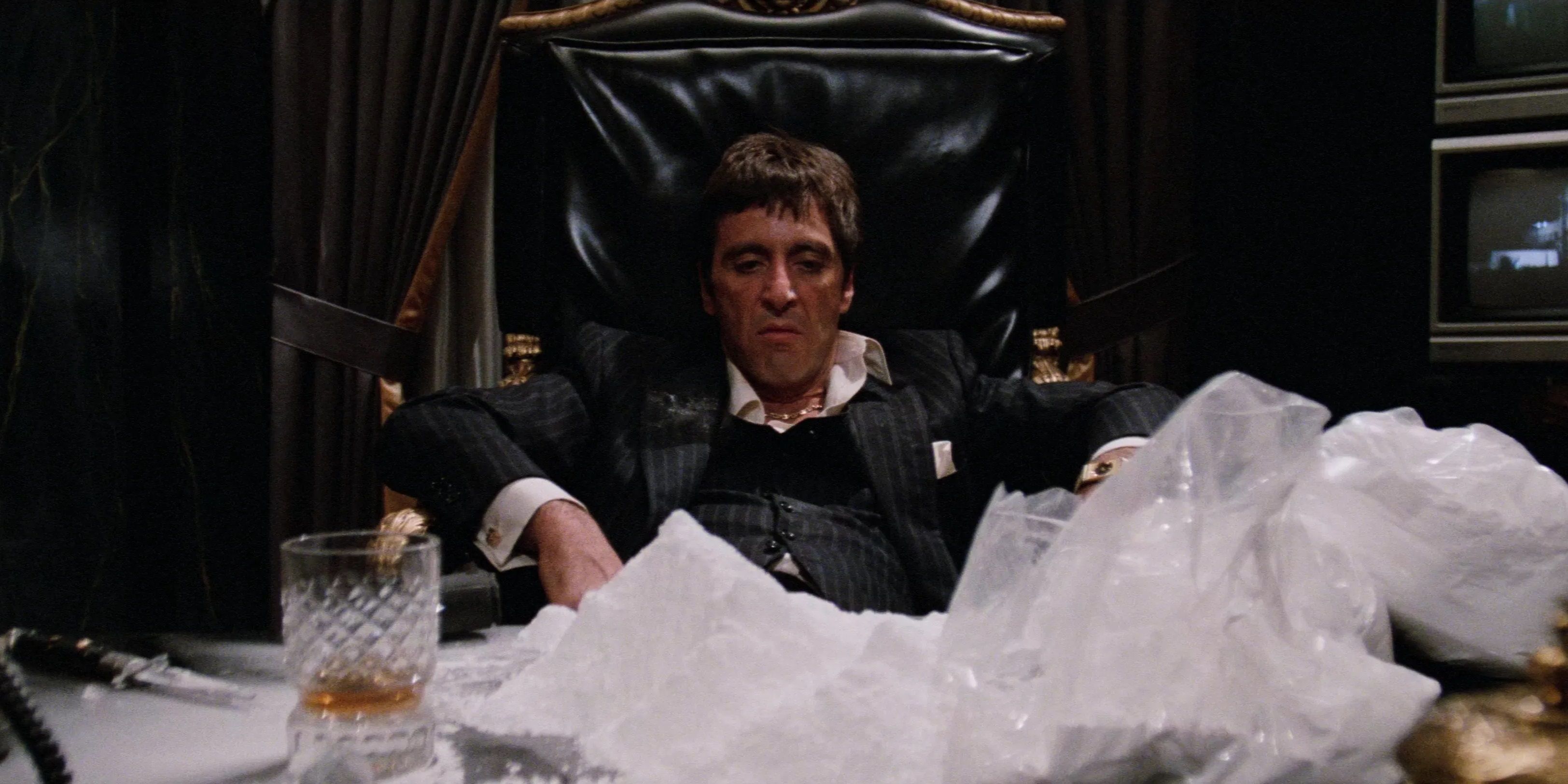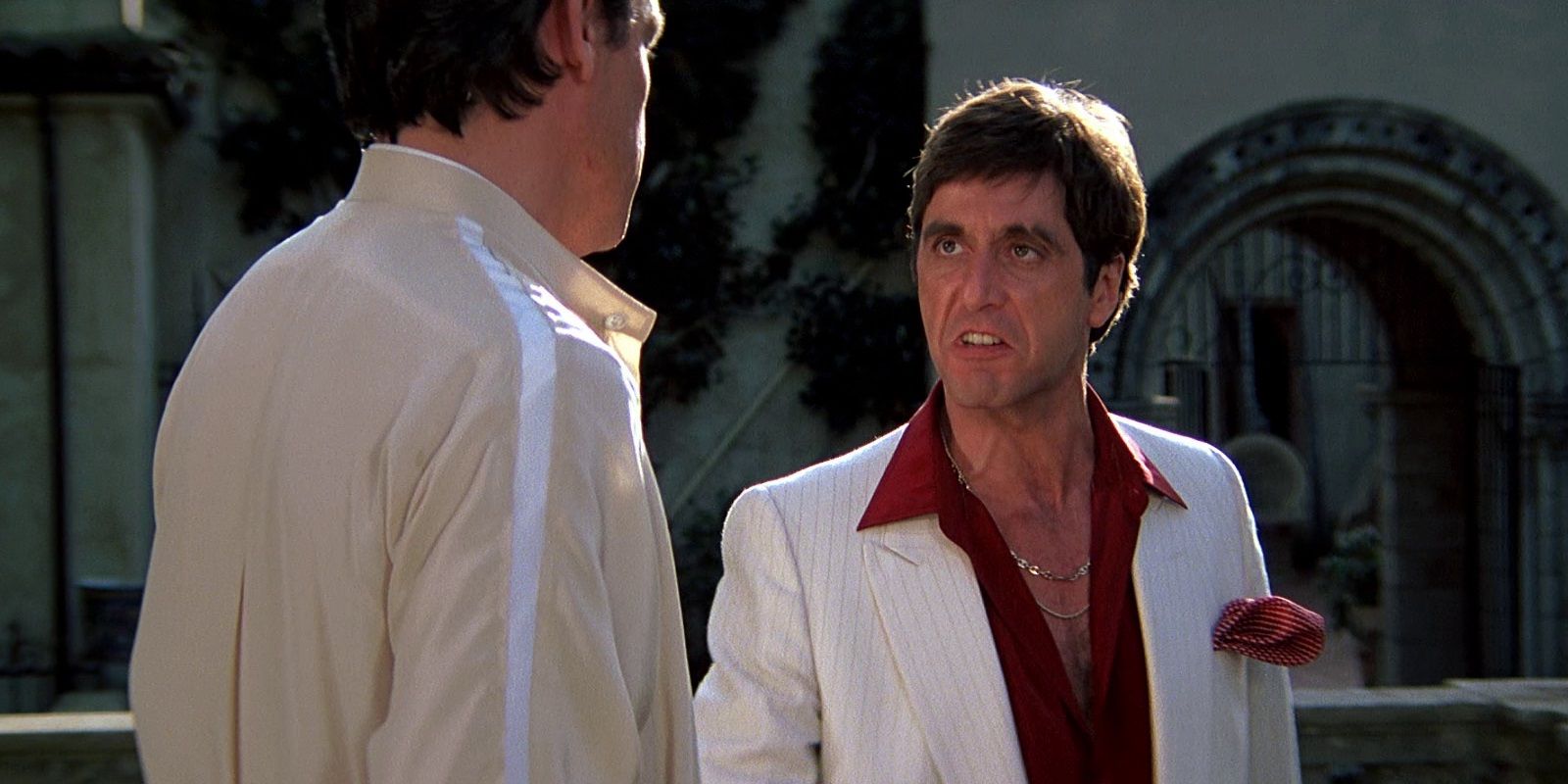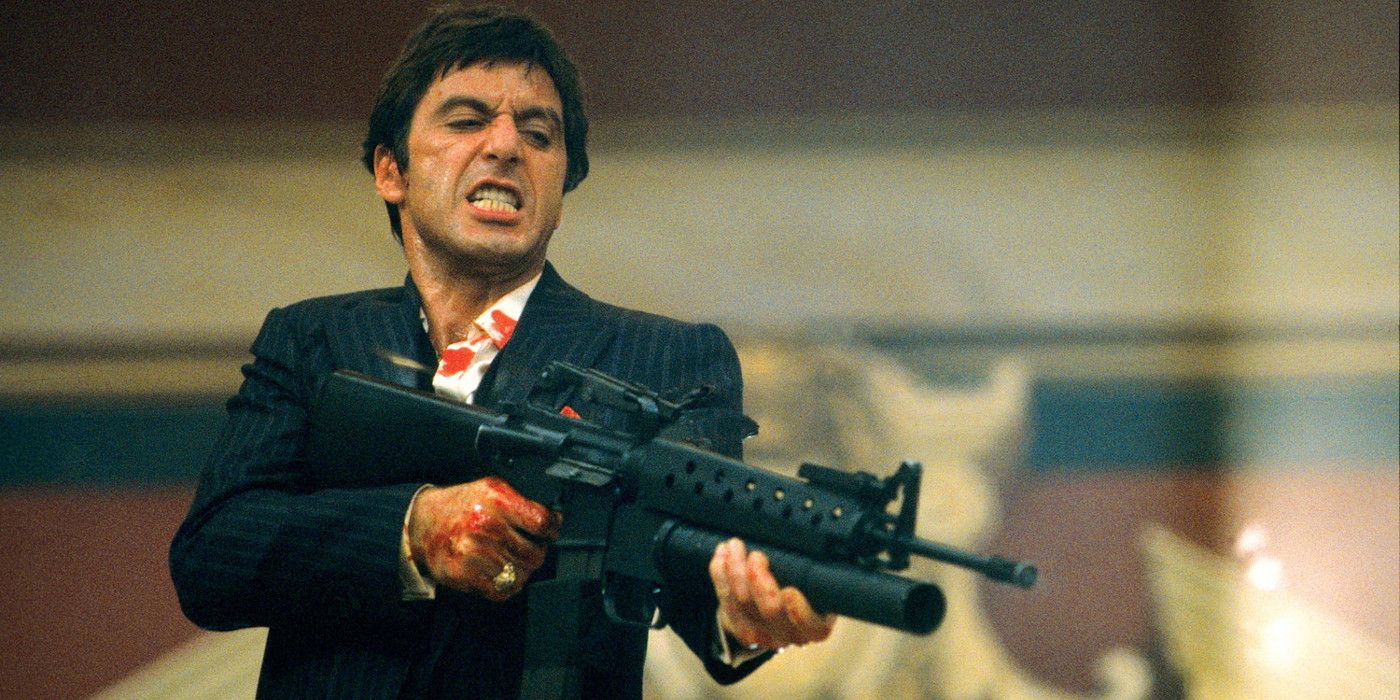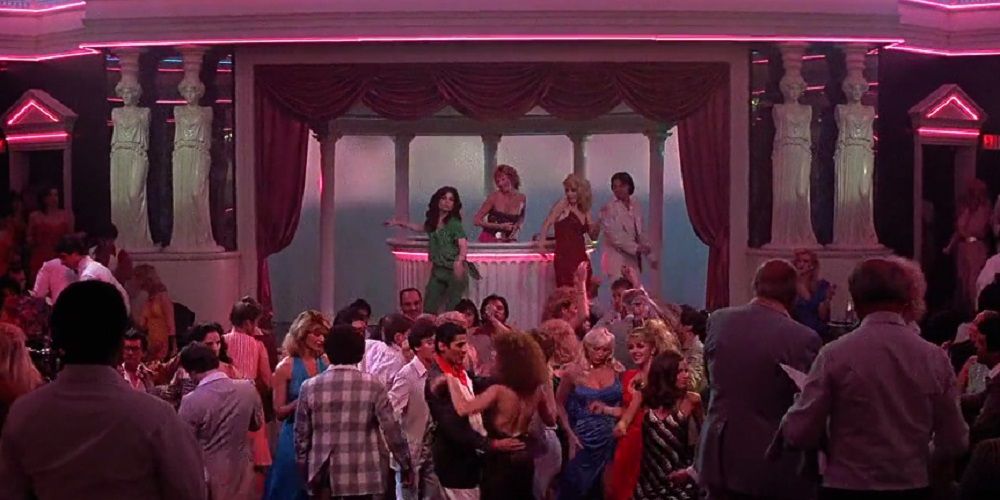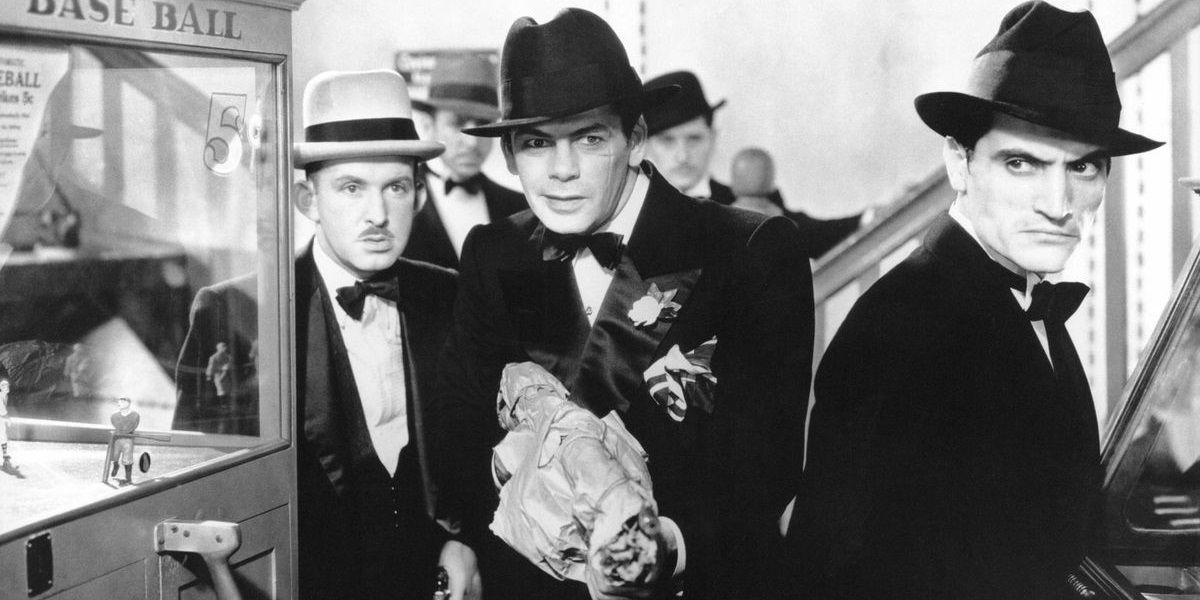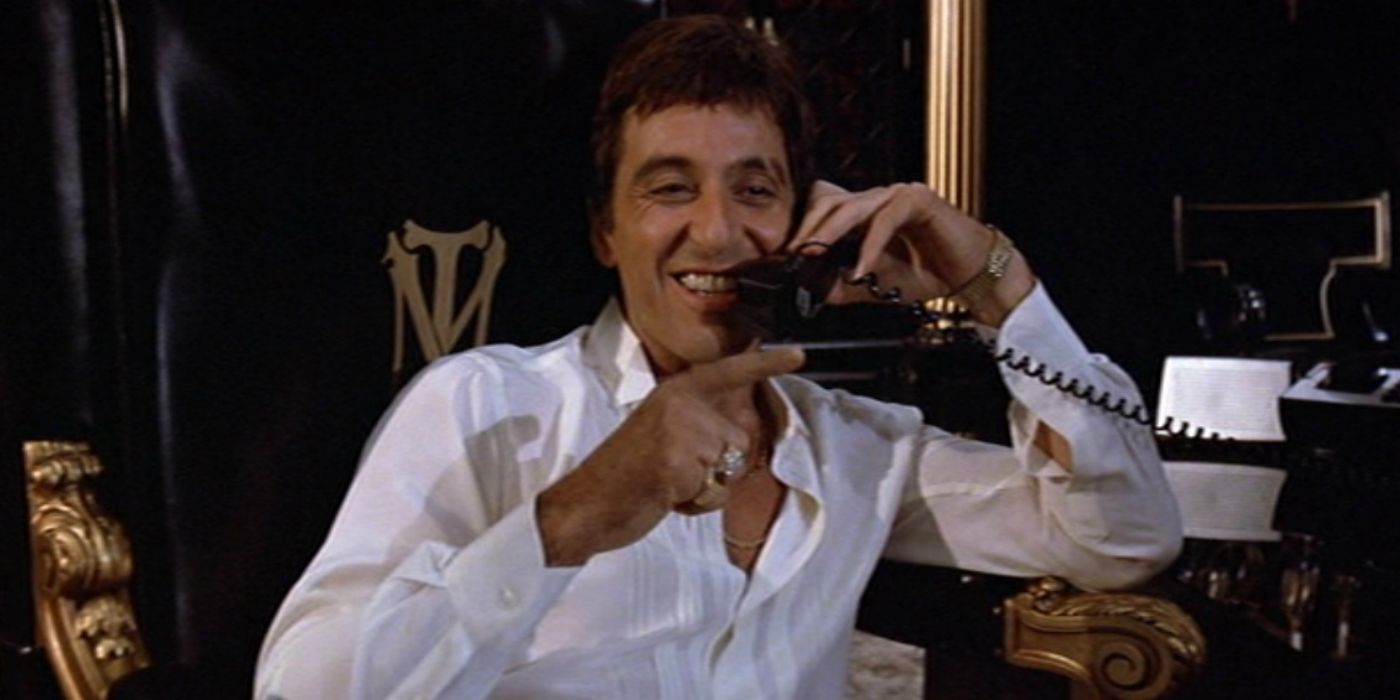On its initial release, Brian De Palma’s Scarface was dismissed by critics for its excessive violence, overlong runtime, and stereotypical portrayal of Cuban immigrants. However, in the years since, the movie has been vindicated by cult classic status. In some circles, it’s considered to be one of the greatest movies ever made.
De Palma’s film is certainly an unforgettable ride, and in many ways, it is a classic. But as the social climate has changed significantly in the nearly four decades since it first hit theaters, it has also aged pretty poorly. Scarface is a masterpiece, but a flawed one.
Classic: Al Pacino’s Performance Is One Of His All-Time Best
Tony Montana is an immigrant who arrives in America with nothing, becomes a self-made billionaire in the cocaine trade, and brings his whole life crumbling down when he starts getting high on his own supply.
Al Pacino’s portrayal of Tony’s arc, from his humble beginnings to his crushing downfall, comprises one of the finest performances of his career.
Aged Badly: The Cuban Protagonist Is Played By A White Actor
White actors are finally getting called out for playing non-white roles, leading Hank Azaria to step down from playing Apu on The Simpsons and a few other Caucasian actors voicing ethnic animated characters to follow suit. In Scarface, the Cuban protagonist is played by white actor Al Pacino.
As great as Pacino’s performance is, the whitewashing is distractingly uncomfortable. Several other Cuban characters in the film are played by white actors, too.
Classic: Brian De Palma’s Slick Style Is Electrifying
Brian De Palma’s films have always been met with complaints that they’re too violent and rely too heavily on references to earlier movies— particularly those of Hitchcock and Godard— but he’s one of the best directors of the New Hollywood movement.
Whether he’s making a horror movie about a telekinetic high schooler or a thriller about a sound recorder who heard too much or, indeed, a crime epic about a Cuban coke kingpin, De Palma’s filmmaking style is unmistakably slick.
Aged Badly: Misogynistic Treatment Of Women
Although Michelle Pfeiffer got her big break in the role of Elvira, on the whole, Scarface’s treatment of its few female characters is pretty misogynistic. Tony and his friends treat women like objects, or prizes to be won— except Tony’s sister, of whom he’s unsurprisingly overprotective.
This might be accurate to the way that drug barons treat women, but it’s uncomfortable when the movie itself seems to revel in the misogyny.
Classic: Oliver Stone’s Script Nails The Rise-And-Fall Gangster Movie Arc
Like many gangster epics of its ilk, Scarface is split into two halves. The first half depicts its protagonist’s rise to power in the criminal underworld, then the second half depicts his fall from grace as he flies too close to the sun and his greed becomes his downfall.
Oliver Stone’s Scarface script is sprawling and large-scale, but it never strays from its focus on Tony Montana’s journey. Stone nailed the rise-and-fall gangster arc almost as well as Goodfellas and the Godfather trilogy.
Aged Badly: All The Sexual Metaphors
Throughout Scarface, the characters use a ton of sexual metaphors. They tell their fellow gangsters not to “f**k” them, using sexual assault as a euphemism for betrayal.
On top of that, Tony spends a huge chunk of the movie talking about his private parts. He says, “The only thing in this world that gives orders is balls,” “All I have in this world is my balls and my word,” and one of his cohorts tells him he has “steel in his balls.”
Classic: It Was A Major Stepping Stone For Movie Violence
In these desensitized days of rampant on-screen violence, the chainsaw scene in Scarface looks relatively tame. But at the time, it was judged by its harshest critics to be a new low in Hollywood’s depraved bouts of gruesome violence.
Movie violence is a controversial issue, because there’s a debate over whether or not it impacts real-life violence, but the depiction of violence is an important part of cinematic study and Scarface marked a major stepping stone.
Aged Badly: Pure ‘80s Soundtrack
A lot of the popular music of the ‘80s was empty and vapid. After the psychedelic pop of the ‘60s and the gritty rock ‘n’ roll of the ‘70s, the ‘80s brought a wave of glitzy tracks devoid of artistic substance.
While the Cream, Tony Bennett, and Aretha Franklin songs on the Goodfellas soundtrack have aged like fine wine, the Paul Engemann (the infamous "Push It To The Limit") and Debbie Harry songs on the Scarface soundtrack have aged like fresh milk.
Classic: It Re-Contextualized The 1932 Original For An ‘80s Audience
Although it bears little resemblance to the original, Scarface is technically a remake of the 1932 crime classic of the same name by Howard Hawks. Hawks’ movie captured the fears of the ‘30s through a loose retelling of the story of Al Capone.
De Palma’s movie updates this story for the ‘80s, telling the story of a contemporary drug lord and capturing the flashy excess of the Reagan era.
Aged Badly: Negative Stereotypes Of Cubans
While Scarface looks particularly bad in today's world of little tolerance for insensitive portrayals of ethnic groups, it was always controversial among the Cuban American community for its negative stereotyping of Cuban immigrants in Miami. The movie drastically exaggerates the number of immigrants who became hardened criminals upon arrival in America.
In truth, there were only around 2,700 criminals among the 125,000 refugees who came to American in the Mariel boatlift. The over-the-top Cuban accents of the white actors playing Cuban characters have also been a point of criticism and don't do the movie any favors in terms of how it treats the ethnicity of its main characters.

